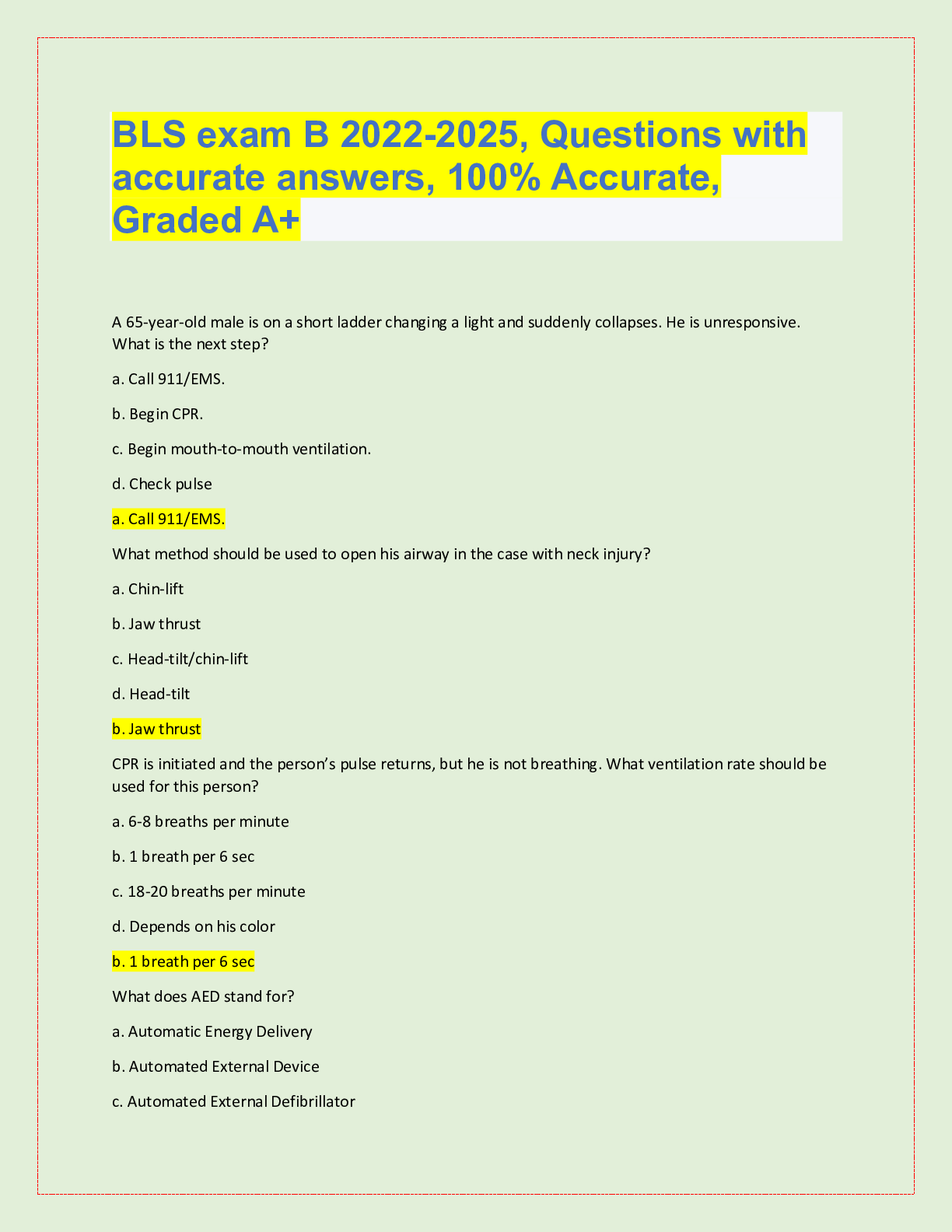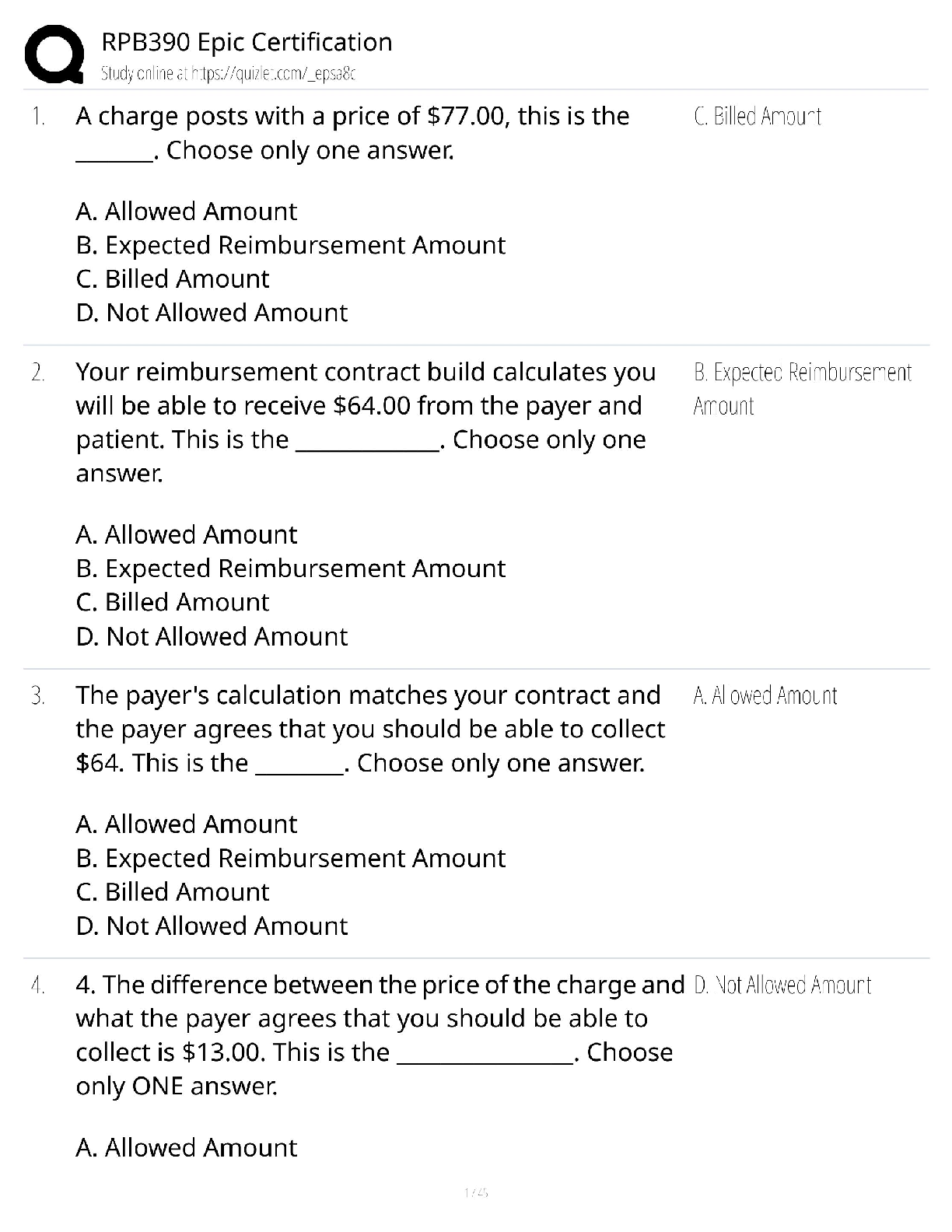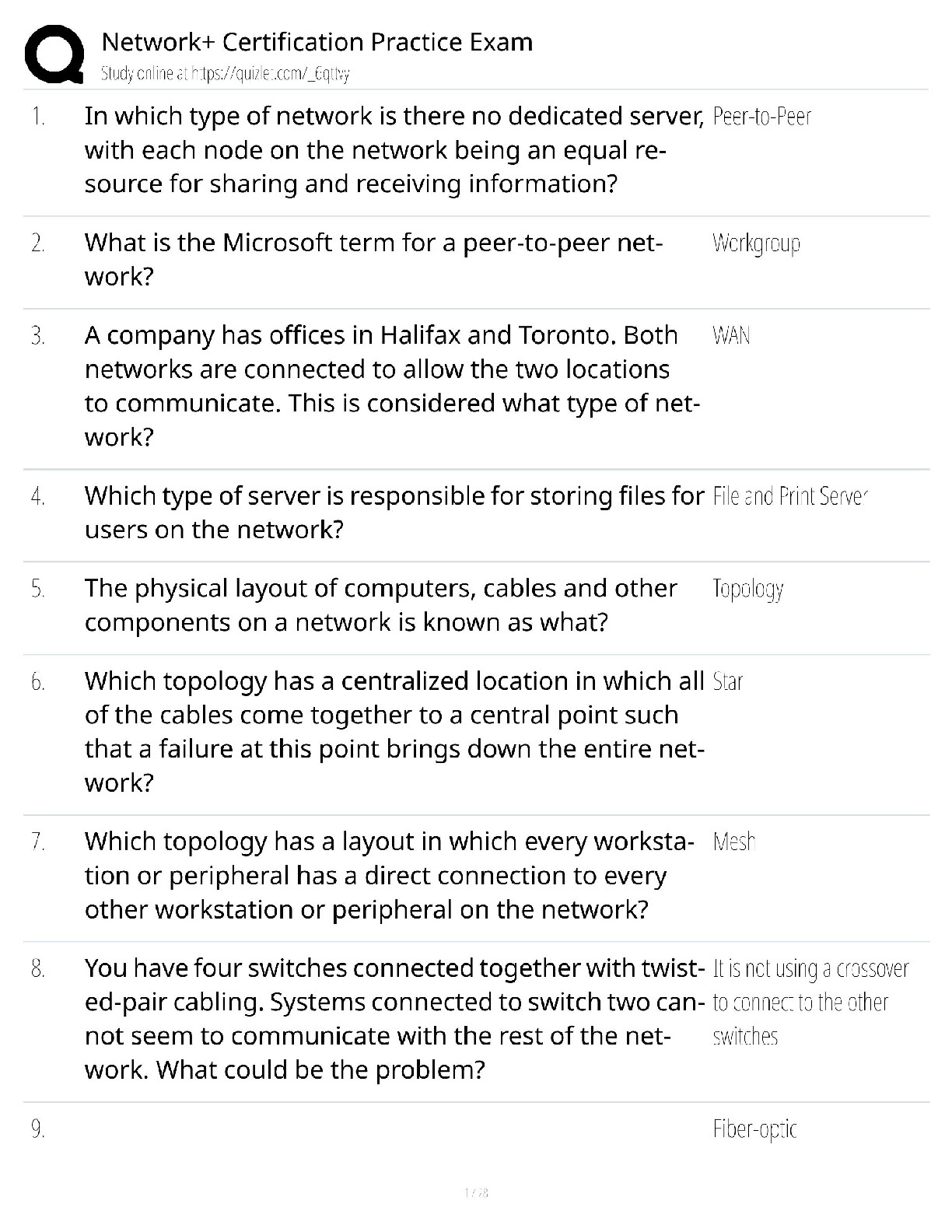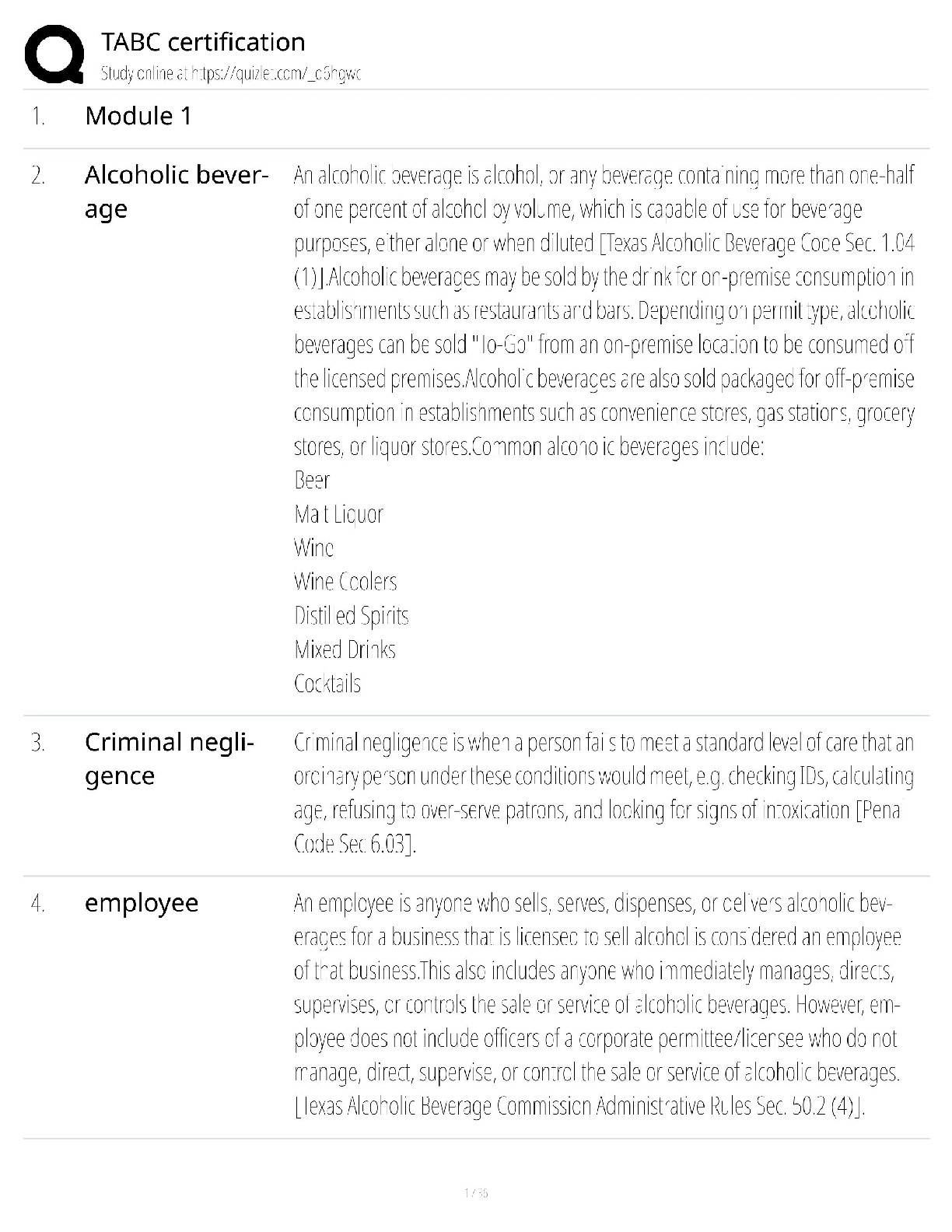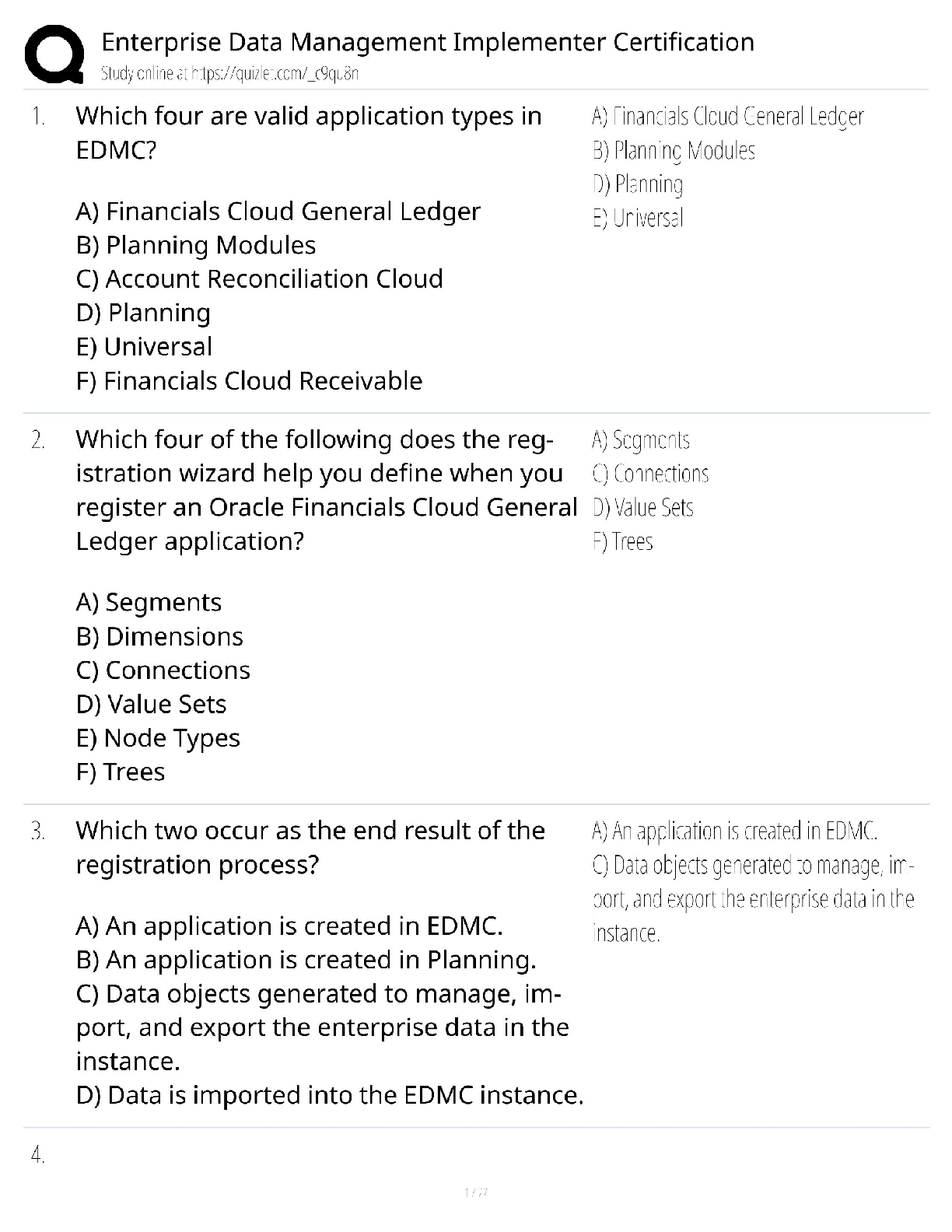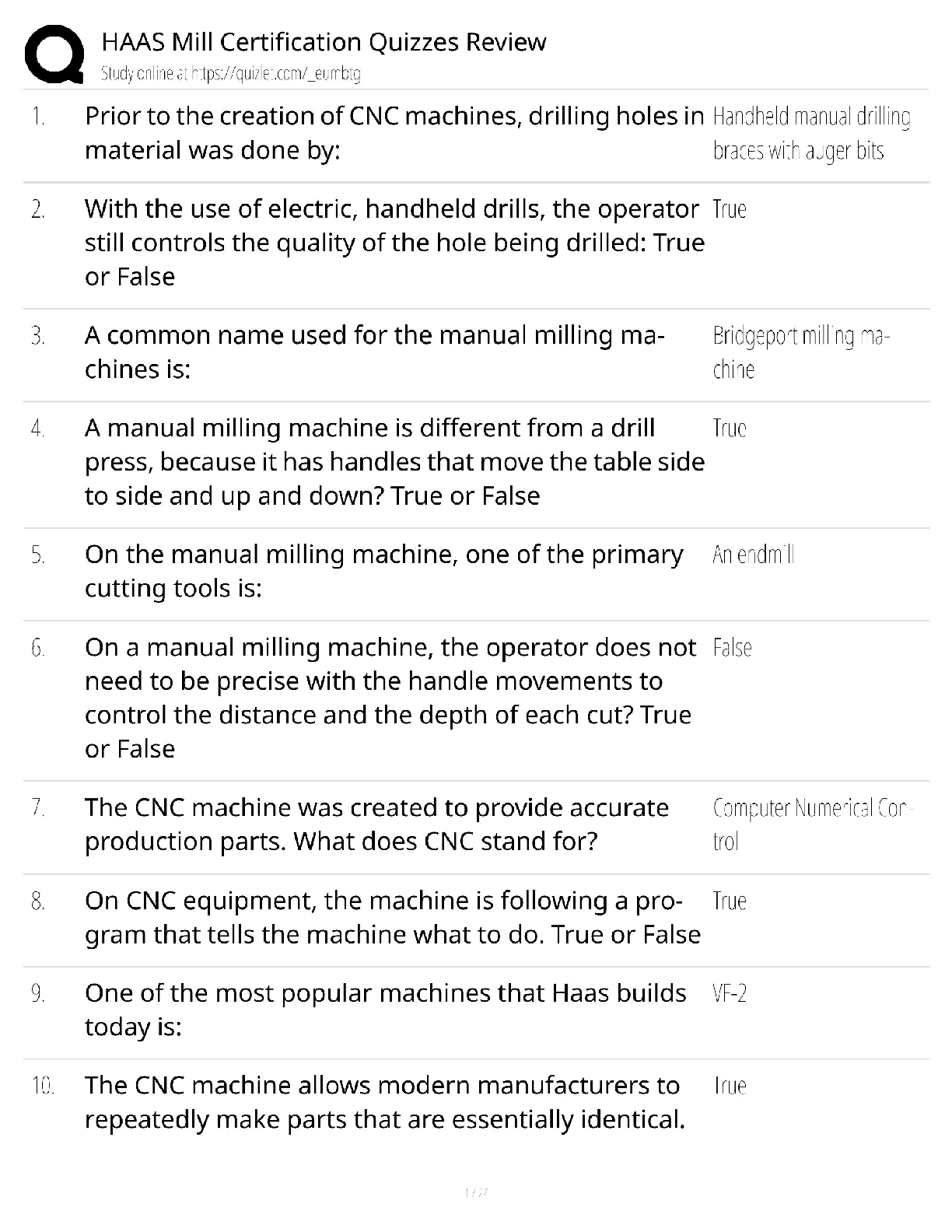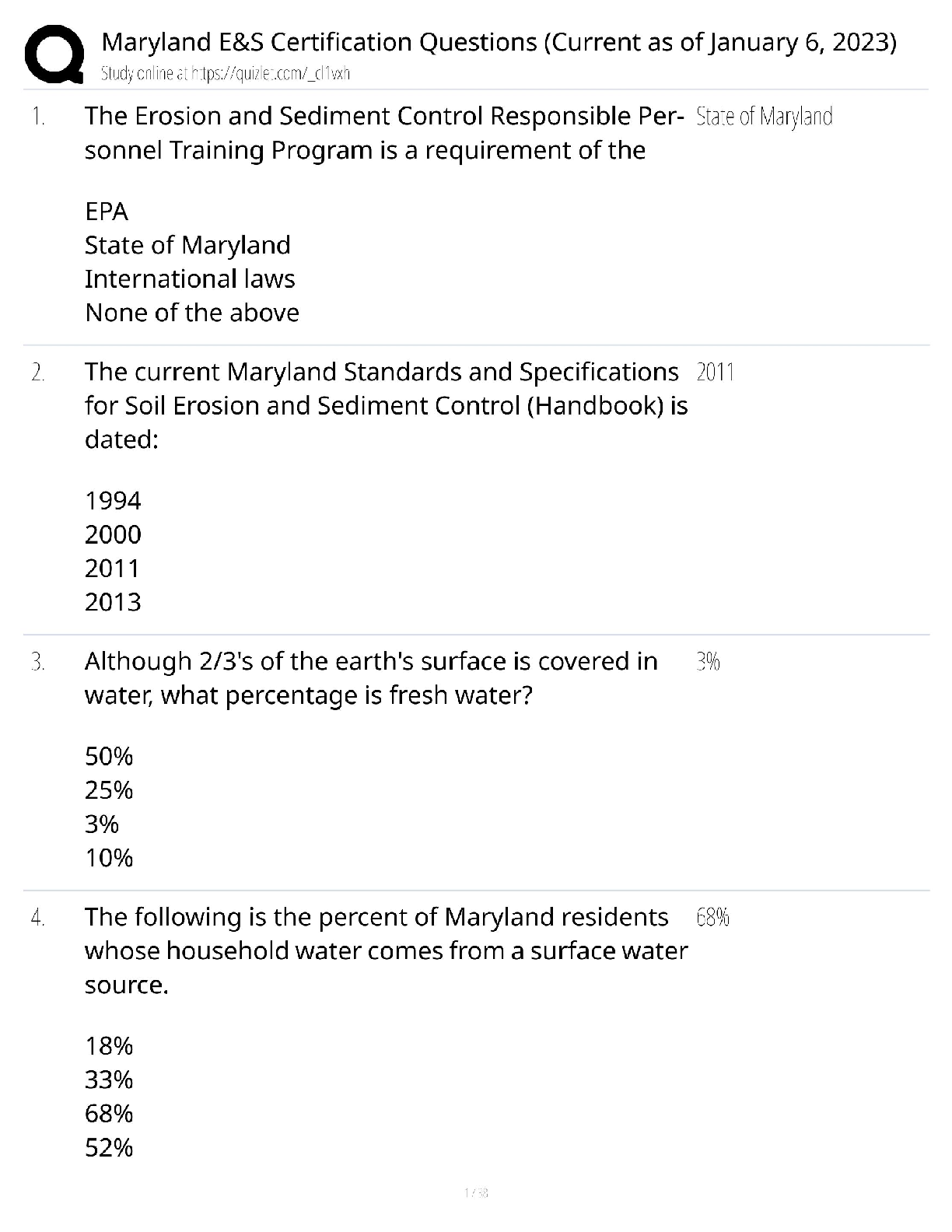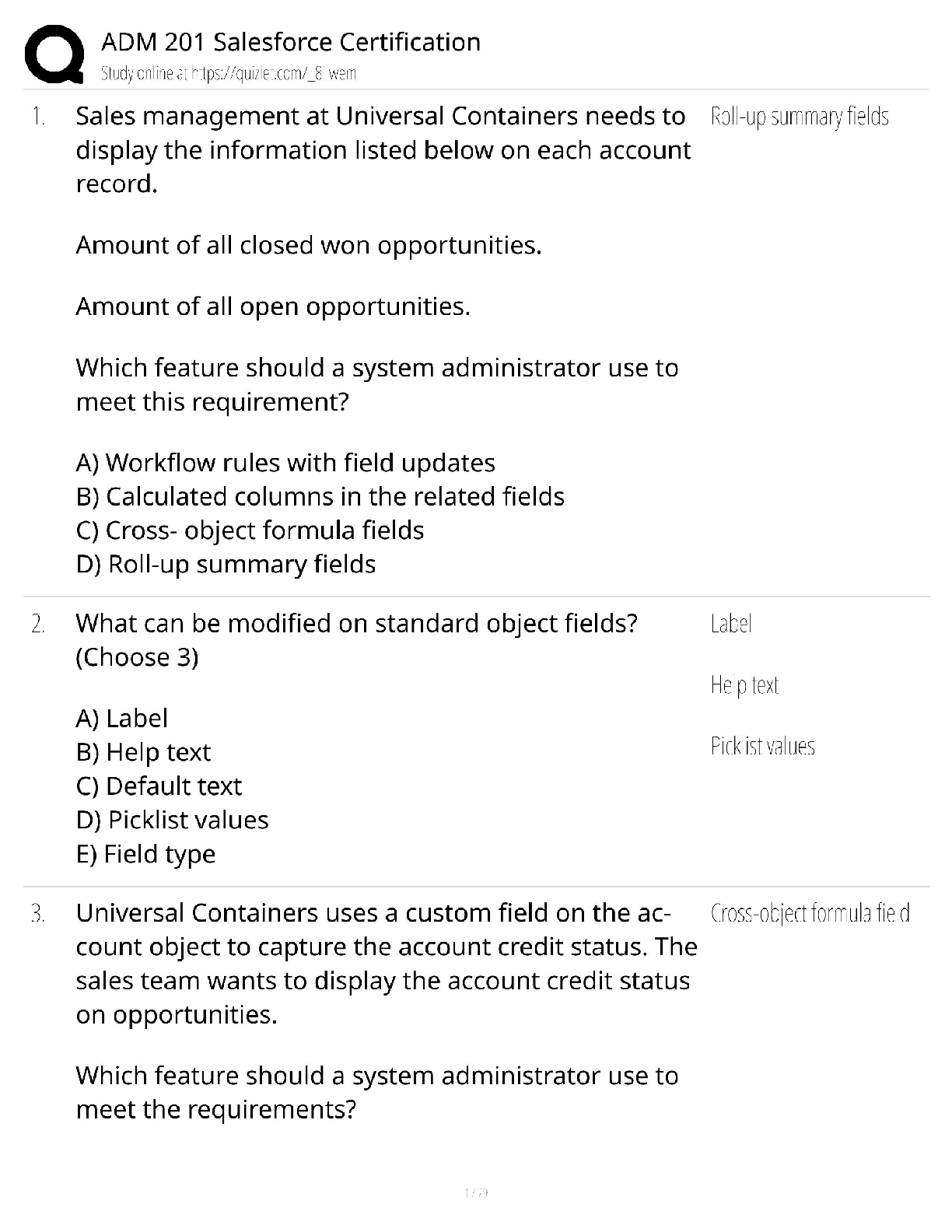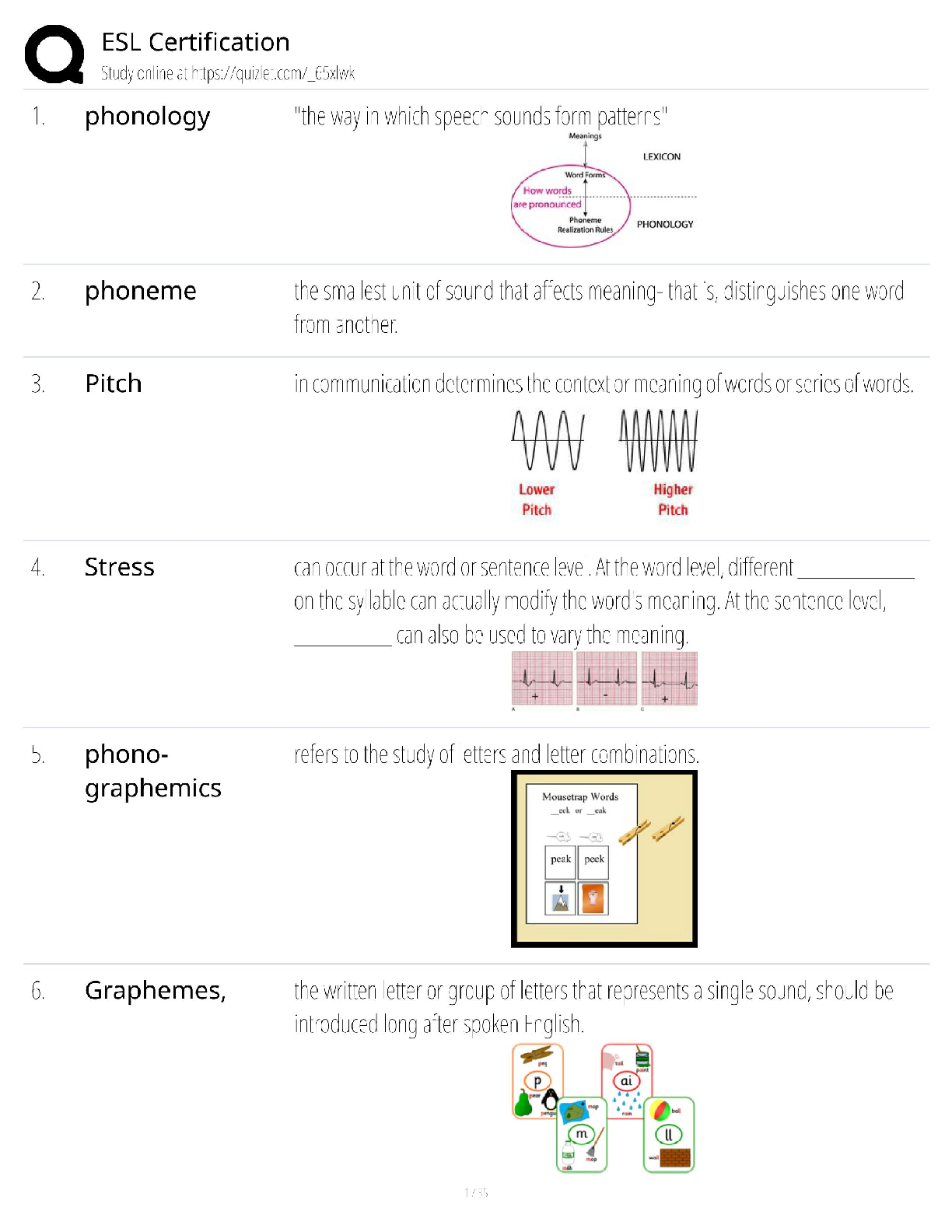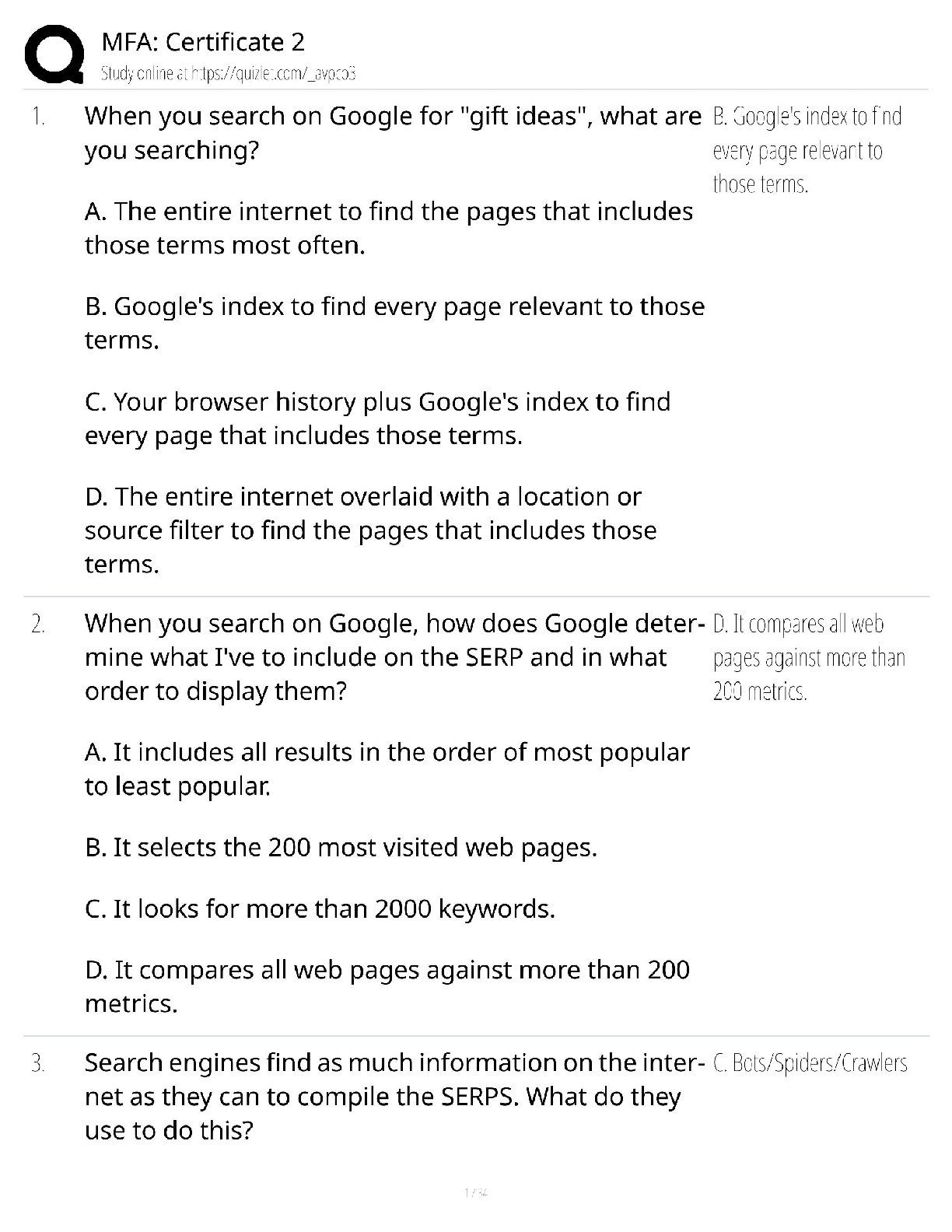English > QUESTIONS & ANSWERS > LSAT Prep Questions & Answers. Latest Version, Verified Predictor questions. LOGICAL: (All)
LSAT Prep Questions & Answers. Latest Version, Verified Predictor questions. LOGICAL:
Document Content and Description Below
LSAT Prep Questions & Answers. Latest Version, Verified Predictor questions. LOGICAL: Laird: Pure research provides us with new technologies that contribute to saving lives. Even more worthwhile ... than this, however, is its role in expanding our knowledge and providing new, unexplored ideas. Kim: Your priorities are mistaken. Saving lives is what counts most of all. Without pure research, medicine would not be as advanced as it is. A) Laird and Kim disagree on whether pure research derives its significance in part from its providing new technologies B) expands the boundaries of our knowledge of medicine C) should have the saving of human lives as an important goal D) has its most valuable achievements in medical applications E)has any value apart from its role in providing new technologies to save lives - ✔✔-Correct Answer: D Difficulty Level: Medium This question asks you to identify the point on which Laird and Kim disagree with respect to pure research. Laird identifies two contributions of pure research: its medical applications ("technologies that contribute to saving lives") and its role in expanding knowledge and providing new ideas. Of these, Laird considers the second contribution to be more worthwhile. Kim, on the other hand, maintains that "Saving lives is what counts most of all." Since pure research saves lives through medical applications, Kim disagrees with Laird about whether pure research has its most valuable achievements in medical applications. The correct response, therefore, is (D). Response (A) is incorrect since we can determine, based on their statements, that Laird and Kim agree that pure research "derives its significance in part from its providing new technologies." Laird explicitly cites the value of pure research with respect to providing new technologies. Kim indicates agreement with (A), at least in the case of medical technologies, by asserting that "Without pure research, medicine would not be as advanced as it is." Response (B) is incorrect since we can determine, based on their statements, that Laird and Kim would likely agree that pure research "expands the boundaries of our knowledge of medicine." Laird notes that pure research provides us with new technologies that have medical applications. Kim points out that "Without pure research, medicine would not be as advanced as it is." Response (C) is incorrect. Kim indicates agreement that pure research "should have the saving of human lives as an important goal" since Kim's position is that "Saving lives is what counts most of all." Since Laird cites the saving of lives as one way in which pure research is worthwhile or valuable, Laird also indicates agreement that pure research "should have the saving of human lives as an important goal," although Laird indicates that expanding knowledge and providing new ideas should be an even more important goal of pure research. The same activity can of course have more than one goal. Response (E) is incorrect. Laird clearly agrees that pure research has value "apart from its role in providing new technologies to save lives," given that Laird explicitly cites a second way in which pure research is valuable. However, nothing in what Kim says suggests disagreement with (E). Kim's position is that the greatest value of pure research is its role in providing new technologies to save lives. We cannot infer from this that Kim believes this role to be the only value of pure research. This question was of medium difficulty, based on the number of test takers who answered it correctly when it appeared on the LSAT. LOGICAL: Executive: We recently ran a set of advertisements in the print version of a travel magazine and on that magazine's website. We were unable to get any direct information about consumer response to the print ads. However, we found that consumer response to the ads on the website was much more limited than is typical for website ads. We concluded that consumer response to the print ads was probably below par as well. The executive's reasoning does which one of the following? A) bases a prediction of the intensity of a phenomenon on information about the intensity of that phenomenon's cause B) uses information about the typical frequency of events of a general kind to draw a conclusion about the probability of a particular event of that kind C) infers a statistical generalization from claims about a large number of specific instances D) uses a case in which direct evidence is available to draw a conclusion about an analogous case in which direct evidence is unavailable E) bases a prediction about future events on facts about recent comparable events - ✔✔-Correct Answer: D Difficulty Level: Easy This question asks you to identify how the executive's reasoning proceeds. The ads discussed by the executive appeared in two places—in a magazine and on the magazine's website. Some information is available concerning the effect of the website ads on consumers, but no consumer response information is available about the print ads. The executive's remarks suggest that the ads that appeared in print and on the website were basically the same, or very similar. The executive reasoned that information about the effect of the website ads could be used as evidence for an inference about how the print ads likely performed. The executive thus used the analogy between the print ads and the website ads to infer something about the print ads. (D), therefore, is the correct response. Response (A) is incorrect. The executive's conclusion about the likely consumer response to the print ads does not constitute a prediction, but rather a judgment about events that have already transpired. Moreover, the executive's conclusion is not based on any reasoning about the cause of the consumer response to the print ads. Response (B) is incorrect. The executive does conclude that certain events are likely to have transpired on the basis of what was known to have transpired in a similar case, but no distinction can be made in the executive's argument between events of a general kind and a particular event of that kind. There are two types of event in play in the executive's argument and they are of the same level of generality—the response to the website ads and the response to the print ads. Response (C) is incorrect. The executive does not infer a statistical generalization, which would involve generalizing about a population on the basis of a statistical sample. The executive merely draws a conclusion about the likely occurrence of specific events. Response (E) is also incorrect. The executive does use the comparability of the print and website ads as the basis for the conclusion drawn; however, as noted above, the executive's conclusion about the likely consumer response to the print ads does not constitute a prediction about future events, but rather a judgment about events that have already transpired. LOGICAL: During the construction of the Quebec Bridge in 1907, the bridge's designer, Theodore Cooper, received word that the suspended span being built out from the bridge's cantilever was deflecting downward by a fraction of an inch (2.54 centimeters). Before he could telegraph to freeze the project, the whole cantilever arm broke off and plunged, along with seven dozen workers, into the St. Lawrence River. It was the worst bridge construction disaster in history. As a direct result of the inquiry that followed, the engineering "rules of thumb" by which thousands of bridges had been built around the world went down with the Quebec Bridge. Twentieth-century bridge engineers would thereafter depend on far more rigorous applications of mathematical analysis. Which one of the following statements can be properly inferred from the passage? A) Bridges built before about 1907 were built without thorough mathematical analysis and, therefore, were unsafe for the public to use. B)Cooper's absence from the Quebec Bridge construction site resulted in the breaking off of the cantilever. C)Nineteenth-century bridge engineers relied on their rules of thumb because analytical methods were inadequate to solve their design problems. D)Only a more rigorous application of mathematical analysis to the design of the Quebec Bridge could have prevented its collapse. E)Prior to 1907 the mathematical analysis incorporated in engineering rules of thumb was insufficient to completely assure the safety of bridges under construction. - ✔✔-Correct Answer: E Difficulty Level: Medium The question asks you to identify the response that can be properly inferred from the passage. The passage indicates that the Quebec Bridge disaster in 1907 and the inquiry that followed caused the engineering "rules of thumb" used in construction of thousands of bridges to be abandoned. Since the Quebec Bridge disaster in 1907 prompted this abandonment, it can be inferred that these were the rules of thumb under which the Quebec Bridge was being built when it collapsed and that these were the rules of thumb used in bridge building before 1907. Further, since the Quebec Bridge collapsed while under construction and the rules of thumb being used were abandoned as a result, it can be inferred that the rules of thumb used in building the Quebec Bridge and bridges prior to 1907 were insufficient to completely assure the safety of bridges under construction. Finally, since the alternative that was adopted in place of the old engineering rules of thumb was to "depend on far more rigorous applications of mathematical analysis," it can be inferred that the mathematical analysis incorporated in the engineering rules of thumb used prior to 1907 made them insufficient to completely assure the safety of bridges under construction. Thus, (E) is the correct response. Response (A) is incorrect. (A) asserts that bridges built before about 1907 were unsafe for the public to use because they were built without thorough mathematical analysis. But this conclusion goes far beyond what is established by the passage. The passage gives evidence only about the safety of bridges built before 1907 while they were under construction. It is silent on whether bridges built before about 1907 were safe when open for use by the public. Moreover, the passage indicates that the rules of thumb used in bridge construction before 1907 were abandoned because the use of those rules did not provide adequate assurance of safety for bridges under construction. It does not follow that bridges built using those rules of thumb (those built before about 1907) actually were unsafe, either while under construction or when open for public use. Response (B) is incorrect in claiming that Cooper's absence from the construction site caused the breaking off of the cantilever. The passage does not establish that, had Cooper been at the site, he could have successfully intervened to prevent the cantilever from breaking off. By freezing the project, he might have spared lives by stopping work, but there is nothing in the passage to indicate that he necessarily would have prevented the collapse. Response (C) is incorrect; there is no evidence in the passage about why nineteenth-century bridge engineers relied on their rules of thumb. Response (D) is also incorrect. While the passage suggests that a more rigorous application of mathematical analysis would have prevented the collapse of the bridge, it offers no evidence that it is the only way the collapse could have been prevented. For example, it might have been prevented had corrective measures been taken in time. LOGICAL: The supernova event of 1987 is interesting in that there is still no evidence of the neutron star that current theory says should have remained after a supernova of that size. This is in spite of the fact that many of the most sensitive instruments ever developed have searched for the tell-tale pulse of radiation that neutron stars emit. Thus, current theory is wrong in claiming that supernovas of a certain size always produce neutron stars. Which one of the following, if true, most strengthens the argument? A)Most supernova remnants that astronomers have detected have a neutron star nearby. B)Sensitive astronomical instruments have detected neutron stars much farther away than the location of the 1987 supernova. C)The supernova of 1987 was the first that scientists were able to observe in progress. D)Several important features of the 1987 supernova are correctly predicted by the current theory. E)Some neutron stars are known to have come into existence by a cause other than a supernova explosion. - ✔✔-Correct Answer: B Difficulty Level: Hard This question asks you to identify the response that most strengthens the argument. The argument concludes that "current theory is wrong in claiming that supernovas of a certain size always produce neutron stars" based on the observation that no evidence has been found of a neutron star left behind by the supernova event of 1987. However, the failure to find evidence of the predicted neutron star does not necessarily indicate that such evidence does not exist. It may instead indicate that the instruments used to search for the evidence are not powerful enough to detect a neutron star in the area where the 1987 supernova event occurred. The argument would thus be strengthened if there was evidence that the search instruments used would in fact be capable of finding the predicted neutron star if that star existed. Response (B) provides such evidence. If "sensitive astronomical instruments have detected neutron stars much farther away than the location of the 1987 supernova," then it is less likely that the predicted neutron star is outside the detection range of "the most sensitive instruments ever developed." Thus, (B) is the correct response. Response (A) reports that most supernova remnants that astronomers have detected have a neutron star nearby. Since (A) gives no information about the size of the supernovas that produced these remnants, it is possible that all of the remnants detected to date are c [Show More]
Last updated: 2 years ago
Preview 1 out of 27 pages

Buy this document to get the full access instantly
Instant Download Access after purchase
Buy NowInstant download
We Accept:

Also available in bundle (1)
Click Below to Access Bundle(s)

LSAT Bundle, latest versions/ Exam Predictors.
LSAT Prep Questions & Answers. Latest Version, Verified Predictor questions.
By Topmark 2 years ago
$30
9
Reviews( 0 )
$11.00
Can't find what you want? Try our AI powered Search
Document information
Connected school, study & course
About the document
Uploaded On
Mar 12, 2023
Number of pages
27
Written in
All
Additional information
This document has been written for:
Uploaded
Mar 12, 2023
Downloads
0
Views
133

